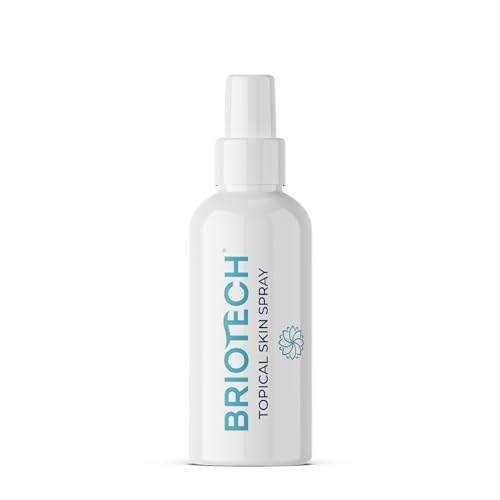Adorning our bodies with jewels and precious metals has been a long held tradition by people from all walks of life throughout human history. This is most commonly achieved through piercings, the act of creating holes in our bodies to place jewelry.
However, this form of body art doesn’t come without its challenges. From swelling to scarring, caring for piercings can be painful and tedious work.
In some instances, piercings may even pose complications that render them beyond saving. This begs the question, when should you give up on a piercing?
Complications, Treatments, & Preventions
Inflammation & Scarring
Let’s begin with the most common piercing troubles.
Whether it be ears, noses, belly buttons or anything in between, all of these areas are susceptible to the aforementioned issues of swelling and scarring.
These complications are usually minor and occur immediately after receiving a piercing because in its essence, a body piercing is an puncture wound that the body perceives as a foreign object.
As a response, our bodies seek to heal the wound through directing more blood to the affected area, inducing swelling and bleeding. Applying direct pressure to the piercing site will help to stop any bleeding.
To reduce inflammation, gently apply a cold pack wrapped in a layer of fabric to the affected area. Ice should never be directly applied to the skin as it can cause tissue damage. If possible, elevate the piercing area to further reduce swelling.
Using clean hands, wash the piercing with warm water for 5 minutes, 3 or 4 times a day. For interior oral piercings, use an antibacterial mouthwash 3 or 4 times a day to aid the healing process.
Other general recommendations are to avoid tight fitting clothing over the piercing that may irritate the affected area. While piercings usually heal well with or without bandaging, cover the piercing with a bandage if irritation develops (Healthwise Staff).
Scarring often follows as the following step in the healing process. Depending on the location of the piercing, healing time varies and could range between 4 to 6 weeks or up to a year, such is the case with cartilage and navel piercings (Healthwise Staff).
Once the piercing has healed, the jewelry can be removed and switched out with a different piece. Although most scars typically fade over time, the following complications listed can also result in lasting scarring.
Infection
Another frequent piercing complication, though usually minor, is infection. Infections can develop at any time and often occur when a piercing is not thoroughly cleaned, touched with unwashed hands, or fitted with jewelry that is too tight.
In fact, an infection can be transmitted during the initial piercing procedure if it is performed in unsanitary conditions or with unsterile equipment or jewelry. An infected piercing entails swelling, redness of the skin, tenderness, and itching.
Additionally, the infection may include a yellow and foul smelling fluid protruding from the hole. For oral infections, symptoms may include speech, chewing, or swallowing problems along with swelling that can block the throat.
To treat minor infections, several simple steps can be taken. First and foremost, do not remove the jewelry from the piercing site unless advised by a doctor or professional piercer. Removing the jewelry may cause the hole to close and trap the infection.
Moreover, taking out jewelry when experiencing an infection could lead to an abscess which requires 
Next, wash hands before touching, cleaning, or handling the piercing. For cleaning the piercing site, use sterile saline or a mixture of distilled water and salt three times a day and pat dry with gauze, a cloth, or paper towel.
Repeat this process until the infection has completely disappeared. Other recommendations include carefully putting on clothes when getting dressed to avoid catching the piercing and sleeping in a position that avoids crushing the piercing as it heals.
If dealing with a more serious infection (i.e. the infection does not improve within a few days, there is a fever, the infection spreads, the jewelry becomes embedded in the skin), contact a doctor who can prescribe stronger medication such as antibiotics.
Ability to fight infection includes different factors, such as diabetes and heart problems among other immune system disorders.
In consequence, these health conditions weaken infection-fighting defenses and cause a slower recovery process that could be more severe and harder to cure. For these reasons, be sure to mention any compromising medical conditions to the piercer before scheduling a piercing.
If infection regularly occurs at a particular piercing site, it is recommended to refrain from continuing to place jewelry in the affected area.
Splitting/Tearing of Skin
Another occurrence that might accompany piercings is the splitting or tearing of skin. A multitude of actions and accidents can cause splitting or tearing of the skin which include but are not limited to: jewelry getting caught in clothing, exercise, children, pets, or sexual activity.
While recent piercings are more vulnerable to injury, older piercings can also be affected by these actions. In addition, very thin jewelry has the potential to carve through the flesh. Once skin has been 
Several steps can be taken to protect piercings and avoid split or torn skin.
First, be aware of the jewelry being worn and movements made. Next, avoid intensive activities while wearing jewelry that could result in split or torn skin. If engaging in activities that pose risks to your piercings, such as sports, wear protective gear that guards the piercing site from injury.
However, if these precautionary steps do not prevent the splitting or tearing of skin, it is best to avoid putting jewelry in the affected area.
Instead, bandage the area and allow skin to rejuvenate. If it is a serious case of split or torn skin, place gauze or a clean cloth over the wound and apply gentle pressure to slow any bleeding. A cool compress can help to reduce inflammation.
Next, head to the nearest emergency room to receive sutures for closing the wound. If a small portion of tissue gets torn during injury, dampen a piece of gauze or cloth and carefully wrap the severed piece of tissue in it and place on ice cubes.
Afterwards, head to the nearest hospital. It is important to note that severed pieces of skin tissue cannot always be reattached. Severe injury might require a plastic surgeon to surgically reconstruct the site of injury.
Metal Allergies
In addition to scarring, skin tearing, and infection, metal allergies must be taken into account for piercing complications as well.
An allergic reaction to metal entails an overreaction of the body’s immune system to a substance or allergen in a metal. Consequential symptoms to an allergic reaction to metal can be intense swelling, pain, and itching.
The most common metal allergen is nickel. To avoid exposure to metal allergens, wear only hypoallergenic jewelry made of materials such as 14- or 18-karat gold, Niobium, Titanium, Platinum, sterling silver, or approved acrylic products (Healthwise Staff).
Migration/Rejection
Other piercing complications are migration and rejection. Migration occurs when a piercing moves from its initial placement, then settles and heals in a new location.
Rejection occurs when the jewelry is expelled completely from the body. When unsuitable or insufficient tissue is pierced, or if the jewelry is too small in diameter, thin in gauge, too heavy or of poor quality, a piercing is likely to migrate.
Such an error is often the result of going to inexperienced or untrained piercers. Other ways migration and rejection might arise is from using a harsh aftercare product, poor health habits, excessive physical trauma or emotional stress while a piercing heals.
In some cases, if migration is left unchecked, it can lead to rejection.
In consequence to migration or rejection, atrophic scarring, which resembles a pockmark, often results. While these types of scars are usually permanent, ways to reduce their appearance include chemical peels or fillers. To mitigate any chance of migration or rejection, visit trained piercers and properly care for the piercing.
However, even when all the proper steps are taken to care for a piercing, sometimes the body will still reject it. This often occurs with surface piercings in locations such as the eyebrows, neck, hip, and wrist.
Rather than directly puncturing a body part, surface piercings puncture only a small section of the skin’s surface. Since there is less skin to latch onto, the body can more easily push the jewelry out of the small amount of skin affected.
In effect, surface piercings are more prone to rejection. Thus, the body might give up on a piercing before one has the chance to decide for themselves.








Other Unexpected Accidents
Along with the aforementioned complications associated with piercings, accidents that result in injury must also be acknowledged. For instance, oral or nasal piercings have the tendency to be accidentally swallowed or inhaled.
Additionally, tooth chipping and gum damage might arise from oral piercings. To prevent these accidents from happening, wear jewelry that properly fits and ensure the closure mechanism on the jewelry is secure.
Closing a Piercing
Upon deciding to close a piercing, whether it be based on any of the aforementioned complications or other reasoning, there are several considerations to take into account. When removing jewelry from a piercing site, some piercings will remain open indefinitely.
Factors that contribute to whether or not a piercing will close on its own are the placement of the hole, length of time having worn jewelry at the site, thickness of the jewelry that was in it, and one’s individual tissue.
Microdermal piercings, such as small ear piercings, are usually easier to close and heal on their own over time in comparison to surface piercings. For instance, belly button, eyebrow, and lip piercings often leave deep scars, creating greater difficulty in closing them fully.
Additionally, piercings that have stretched skin to larger dimensions, such as gauged ears, are prone to leaving substantial voids. Stitching is likely necessary to close larger holes. In other cases of stretched or distorted skin, plastic surgery might be required to correct the misshapen tissue.
If experiencing an infection, remember to let the infection heal before removing the jewelry so as not to trap the infection in the skin.
Other steps to speed up skin rejuvenation include keeping the affected area clean, eating a nutritious diet, and staying well hydrated. Scar tissue will later develop to help close the piercing.
To reduce the appearance of scarring that doesn’t fade, apply scar cream for at least 30 days, unless the cream causes irritation or inflammation of the skin.
Use only on external areas as ingredients are not safe for consumption.
Conclusion
While it is not possible to prevent all piercing complications, ways to mitigate potential issues and ensure long lasting piercings are to choose an experienced piercer, ensure all safety measures are met during the procedure, and adequately care for the piercing on a regular basis.

